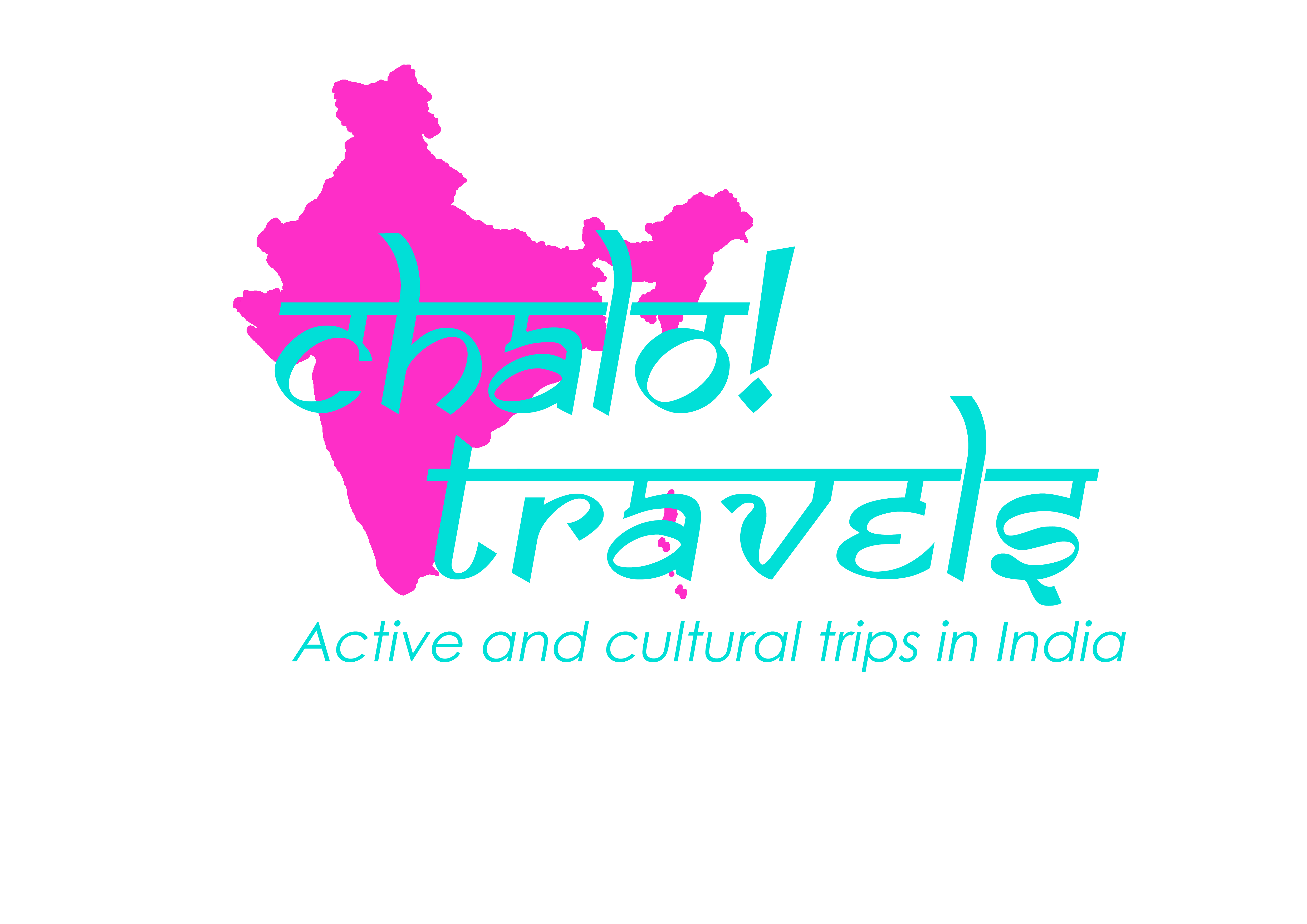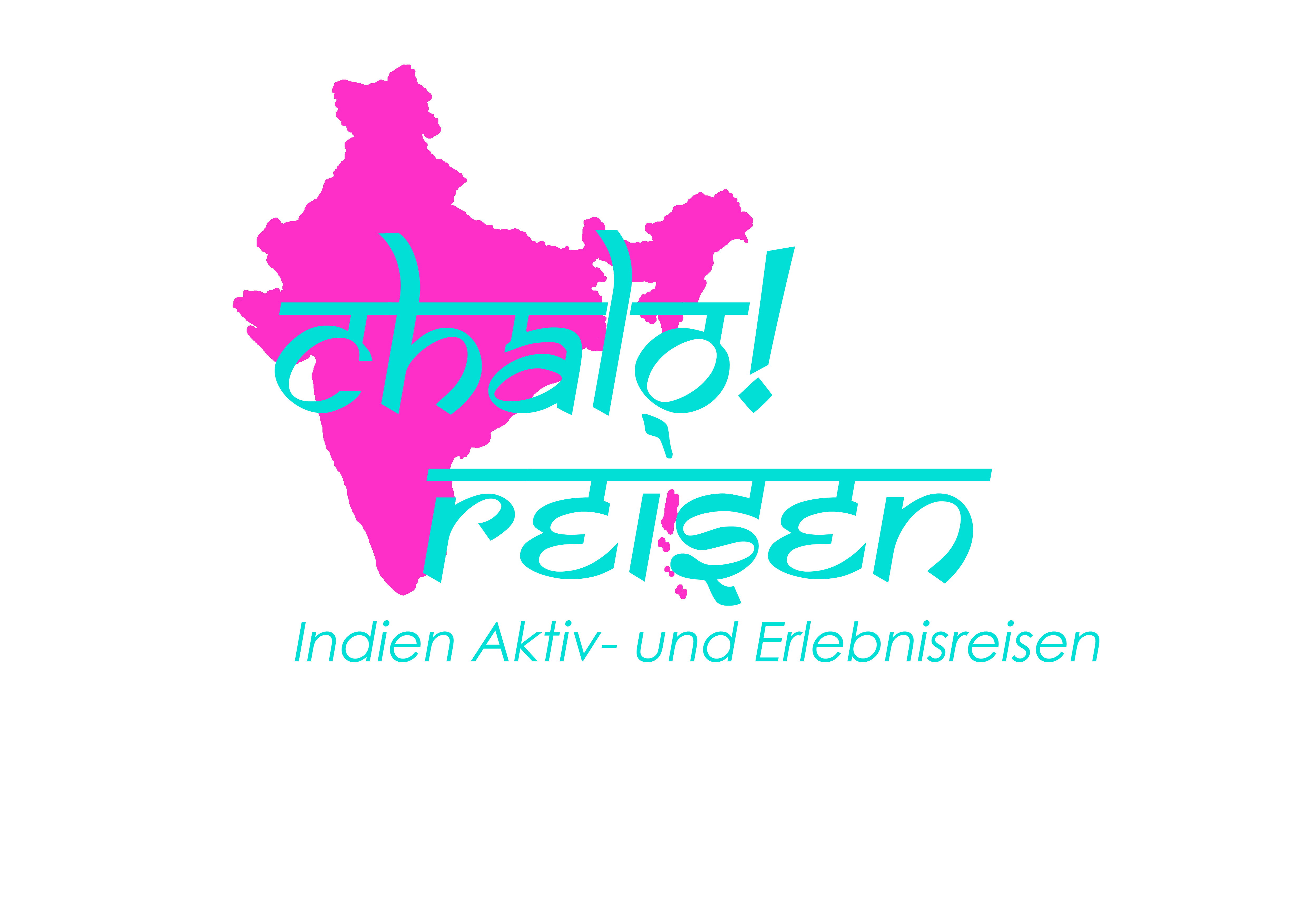- Sport & Abenteuer Reisen
- Reise Bausteine
- Klettern & Expeditionen
Overview
The 6153 meter high Stok Kangri is probably the most famous six-thousander peak in India. Due to its easy accessibility and virtually no technical requirements, the Stok Kangri is a popular peak for novice mountaineers or sporty adventurers who would like to climb a 6000 summit. It is located in Ladakh and is a prominent point of the Stok chain.
This four-day “expedition” is suitable as a travel component for our cultural, cycling and hiking trips in Ladakh, but can of course also be booked as a separate tour.
Due to the rapid ascent to over 6000 meters altitude, a previous good acclimatization makes sense.
Ideal as a connecting trip to our bike tour over the Manali Leh Highway, at the jeep safari high to Ladakh or in combination with the Markha Valley Trek.
Program
Day 1 drive from Leh to Stok (3565 m) and Trek to Manokarma (4480 m)
After a good breakfast we drive from Leh to the starting point of the expedition to the village of Stok. Due to the relatively short day of trekking, it is a good place to visit the monastery and village for a short time. We meet our expedition team and make our way to Manokarma. The simple three-four-hour hike takes us through the barren desert landscape of Ladakh. (Overnight in the tent) -/L/D
Day 2 Manokarma to The Basecamp of Stok Kangri (4980 m)
Today it goes up to the base camp on a hike of 4- 5 hours. The Basecamp is a nice place, but can be very crowded due to the popularity of The Stok Kangri in the high season. We use the rest of the day to recover and prepare for tomorrow’s summit. (Overnight in a tent) B/L/D
Day 3 Summit Day
Early at night at about 1 o’clock we start with the long ascent to Stok Kangri. We cross the moraines and glaciers, then we go steep up to the summit. Depending on the conditions at Stok Kangri, we may need to use ropes and travel with crampons. Today, physical and mental strength is required, because for the ascent we will need 9-12 hours. But for the summit experience with a spectacular view of the surrounding mountain world, the effort is always worth it.
Then we go down again to the base camp. (Overnight in a tent) B/L/D
Note: If we require practice with the equipment 0r longer acclimatization, we will take an extra day in the base camp before the ascent.
Day 4 Return to Leh
We trek down to Stok. from where we take a vehicle back to Leh. B/L/-
Services
- Trained Mountain Guide
- Permission from the IMF (Indian Mountaineering Foundation)
- Cook and helper
- Load horses or carriers
- Accommodation in 2-3 man tents for 3-4 nights
- Full catering during the expedition
- complete transport
- complete expedition equipment
FlightsVisaUnmentioned meals and drinksTipsPersonal trekking equipment (clothing, backpack, headlamp, trekking shoes, gloves etc.)Accommodations in Leh- we are happy to offer you an all-round package for the ascent of Stok Kangri
Highlights

Der 6153 Meter high Stok Kangri 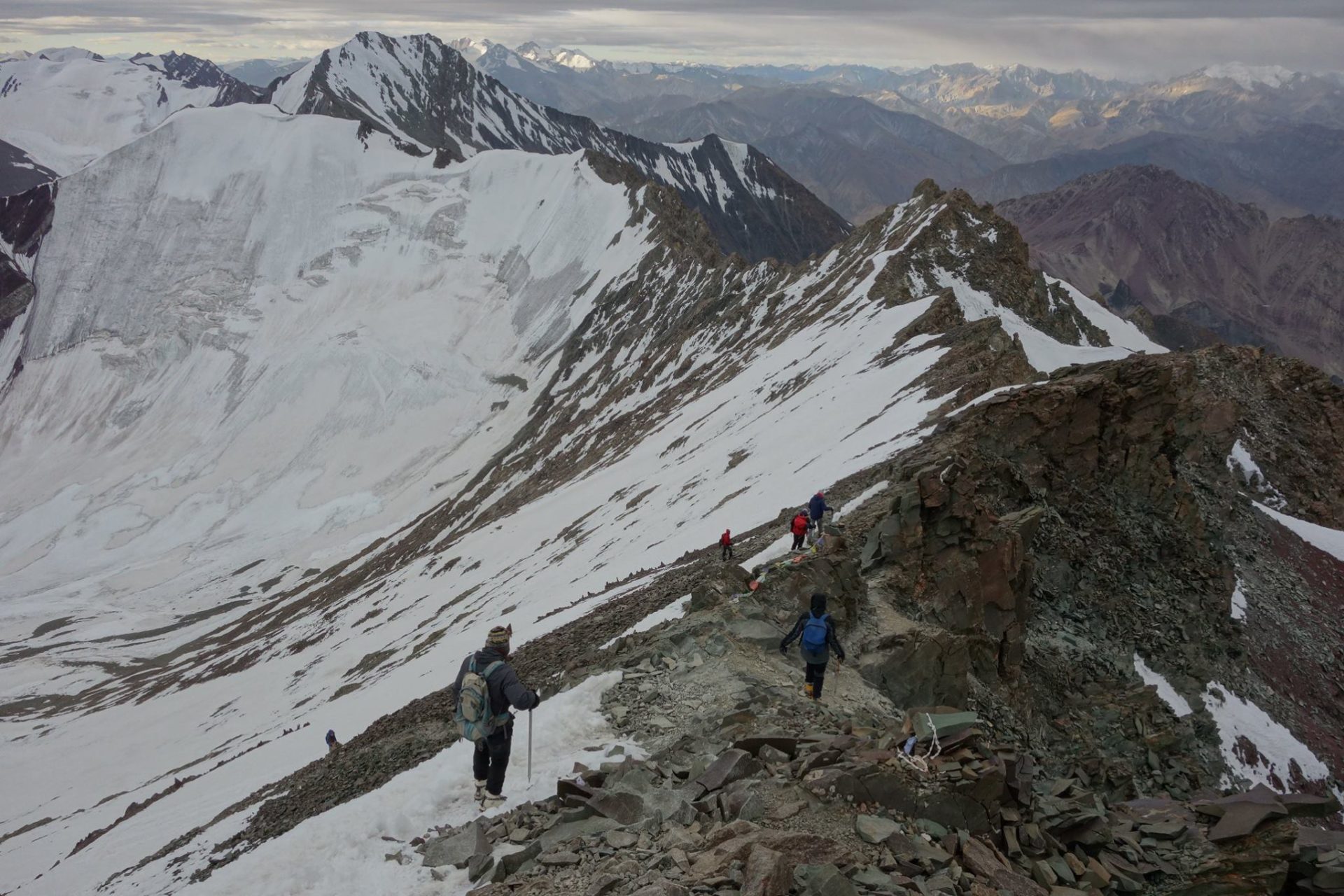
Stok Kangri Expedition 
peak 
Stok Kangri Expedition 
Base Camp 
Base Camp 
Stok Kangri Expedition 
Stok Kangri Expedition 
Stok Kangri Expedition 
Stok Kangri Expedition 
Stok Kangri Expedition 
Stok Kangri Expedition 
Base Camp 
Stok Kangri Expedition 
summit day 
summit day 
Stok Kangri Expedition 
summit 
Stok Kangri Expedition 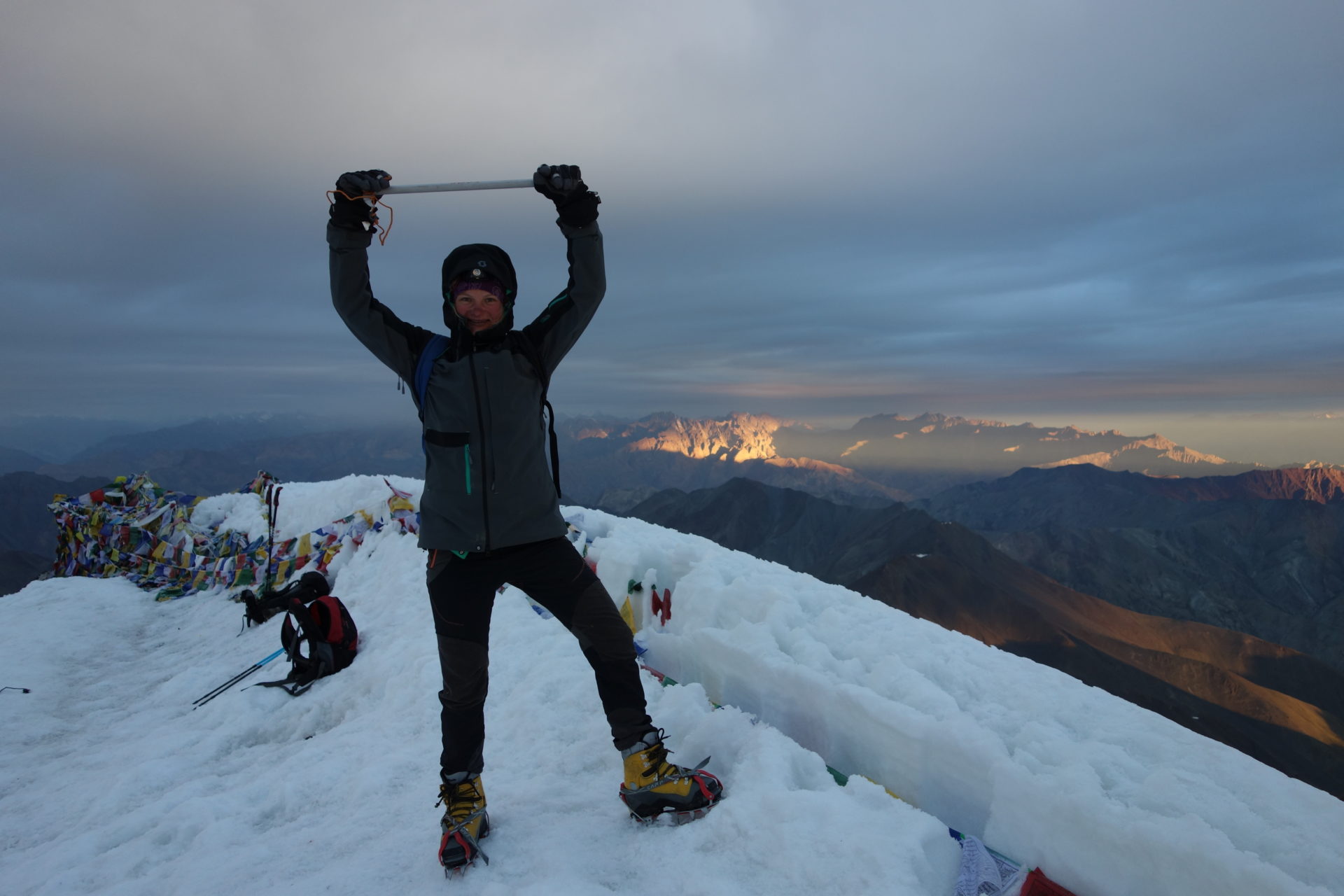
summit 
Stok Kangri Expedition 
Stok Kangri Expedition 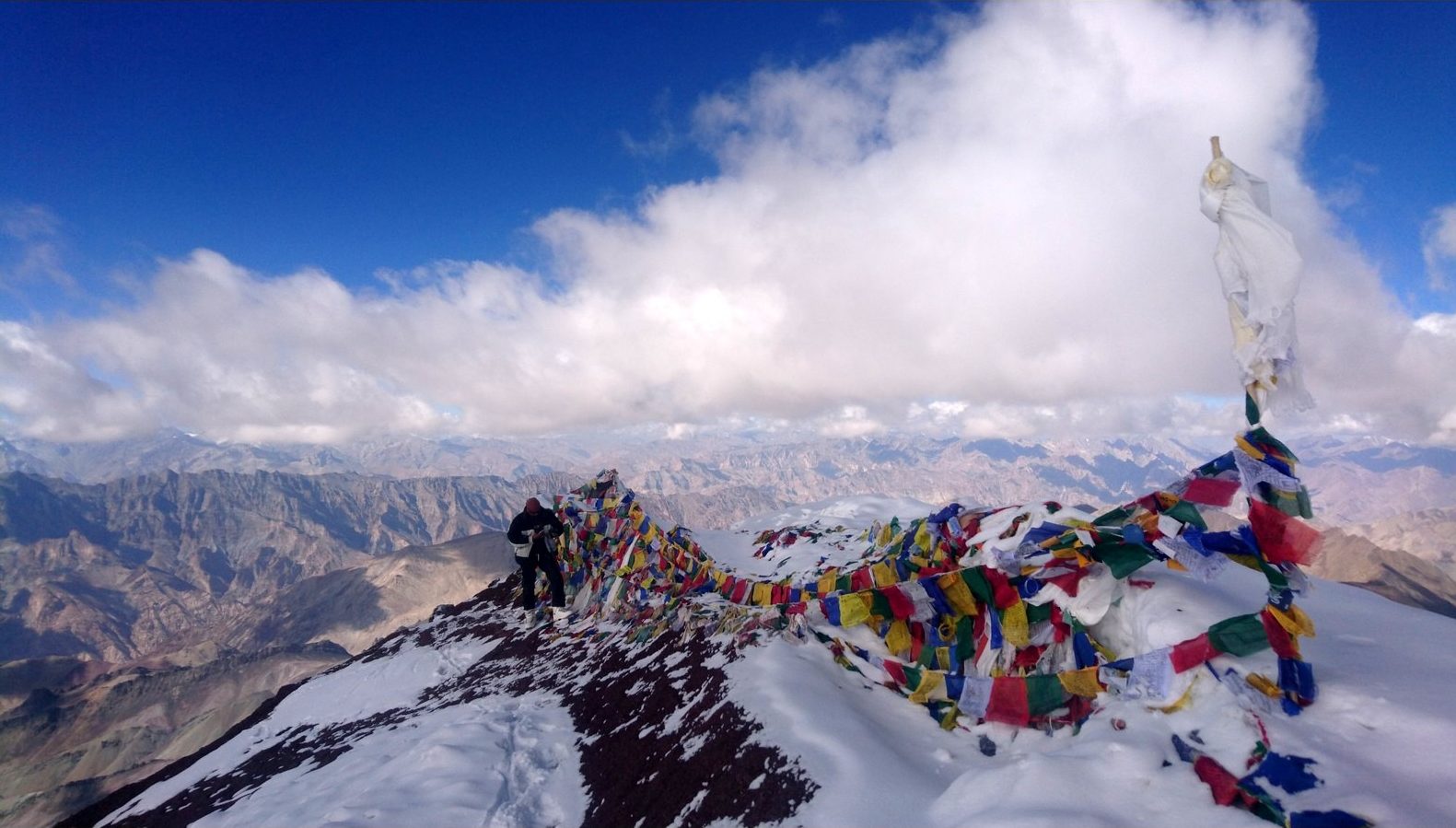
Stok Kangri Expedition 
Stok Kangri Expedition
Prices and Dates
This expedition is possible from June to September at any time!
450 € per person
Tour Info
Requirements
Mountaineering experiences are not a prerequisite. You should be physically and mentally fit for the ascent. Due to the rapid ascent to 6000 meters, prior acclimatization is necessary.
Information about our Expeditions in the Indian Himalaya with Chalo! Travels
- Mountain guide and team
On all our expeditions we have at least two trained local mountain guides with us. Our mountain guides have all completed all Indian mountaineering training and regularly lead expeditions and mountaineering courses. They have climbed the peaks several times and know the terrain excellently. All our mountain guides speak English.
In addition, there is a local team that will accompany us at least until the base camp. Which includes cook, helpers, horsemen with horses or Nepalese carriers, depending on the type of trek up to the base camp.
All our team members have been working with us for years, are very friendly, professional and always striving to give our guests a great experience and fulfill their wishes. Their English is rather mediocre or non-existent, but this is not necessarily a hindrance to communicating with them.
2. Summit
The summits have a different level of requirements from simple to difficult. Even with simple ascents of the summit, certain climbing techniques are required, as well as the use of equipment. On each of our tours we include days of practice to learn or repeat techniques and practice using crampons, ice picks, gaiters and using the rope. Thus, even inexperienced participants can participate in a summit expedition with a more difficult degree. The peaks are between 5000 and 6500 meters high.
The first days of the expeditions to the base camp are more like trekking days. The daily routes are between five and eight hours long (with breaks) and an average increase of around 500-800 metres of altitude is completed.
In between, rivers may have to be crossed. The paths are partly well developed, but sometimes also almost non-existent. On our trekking routes there are hardly any villages between, so we will take enough food for the whole tour.
From the base camp we will reduce our team and only travel with our guests and the mountain guides. While the rest of the team will stay in base camp. Meals will be easier, the daily routes can be up to 12 hours and especially on the day of the summit we start in the early morning hours around 2:00-3:00. From Base camp we will be on the road with all the equipment and depending on the situation, the mountaineering team will fix the ropes.
In all our expeditions we have planned 1-3 additional days in case the weather conditions are bad or we need more time for a good acclimatization. If we reach the summit without these additional days, our guests have a hotel in Manali at their disposal.
3. Daily routine till Base camp
7: 00 am Get up with tea
7:30-8:30 am Breakfast
7:00-9:30 am Dismantling of the camp
8:00- 9:30 am Start Trek
1:00 pm Lunch on the way
3:00-5:00 pm Arrival at the camp and camp construction
3:30-5:30 pm Snacks
7:00 pm Dinner
4. Altitude and altitude sickness
This is a very important topic that should not be underestimated, especially during our expeditions in the Indian Himalayas. At altitudes above 3500 m, our body has to slowly get used to the low air pressure, which also causes less oxygen to enter our lungs. The first signs of altitude sickness are headaches, which are accompanied by dizziness, nausea, insomnia and loss of appetite. It becomes problematic when water accumulates in the lungs and brain, and edema occurs. Then only the immediate descent to lower altitudes will help. To prepare for the heights on our treks, we will spend some nights in the same camp and do so-called “loadferrys”. This means that we transport some of our luggage to the next higher camp the day before and get back to the low camp. During the trek we will slowly ascend to acclimatize. If we notice that there are problems with our guests (each person is otherwise able to acclimatize, regardless of age, gender and fitness level), either the entire tour group or the participant with a team member descends/returns. In addition, it makes sense to take an emergency drug for altitude sickness. For this, it is best to inform yourself at the pharmacy or seek advice from the travel doctor. In addition, we will have oxygen with us for the emergency.
Our expeditions are organized in such a way that the complete tour from Delhi to Delhi is usually possible in two weeks. Nevertheless, we advise our guests to extend this period as far as possible in order to have more time for the actual acclimatization.
5. Luggage
On our expeditions from Basecamp, every expedition participant is responsible for carrying his or her personal clothes and belongings, as well as for his own equipment and some of the food and team equipment (ropes, materials, tents, cooking utensils). The total weight will be between 15 and 20 kg. Until base camp we will have the support of carriers and load horses. Here is the packing list for our expeditions.
6. Meals
During the trek to the base camp there will be a vegetarian full catering. Water is either boiled or we have a water filter with us.
Breakfast (daily selection):
Coffee/Tea
Oatmeal porridge/muesli/cornflakes/Indian porridge
Indian Breakfast/Toast/Eggs/Jam/Butter/Cheese/Honey/Chocolate Spread
Sliced fruit/vegetables
Lunch (mostly lunchbox), sometimes warm in the camp:
Sandwiches/Indian (rice, chapati, vegetables)/eggs/potatoes
Juices
Chocolate
Fruit
Snacks:
Tea/coffee
Cookies
French fries/Indian snacks
Soup
Dinner (depending on the length of the trek, a mix of Indian/Chinese/Continental):
Vegetable dish
Lentil dish
Rice/noodles
Chapati
Salad
Dessert
7. From Base camp, meals are more simple with carbohydrate-rich food
Breakfast:
Tea, Coffee
Oatmeal, muesli, rice
Lunch (self-carried and divided for all days):
Dried fruits and nuts
Chocolate bar/muesli bar
Boiled potatoes/eggs
Cheese
Fruit
Snacks:
Biscuits, Soup, Instant Noodles, Tea/Coffee
Dinner:
Noodles/rice/instant dishes/couscous
8. Accommodation and Camp
We have light 2-3 man tents, sleeping bags with comfort zone up to -5°C, as well as good mats. It is recommended to bring personal indoor sleeping bags.
In addition, we have a spacious dining tent with tables and chairs, and a kitchen tent for the team up to base camp. For expeditions of up to 4 people, the kitchen tent can also act as a dining tent at the same time.
From Base camp we will not have a kitchen and dining tent.
9. Temperatures
In the Himalayas, temperatures fluctuate widely. While it can get warm up to 25°C during the day and the sun is not only warming but also very intense (sun protection is a must), it can also cool down at night well below the minus degrees with temperatures down to -10° C, especially in the months end of September and October, as well as in June and at altitudes from 4500 meters. There may also be weather changes with snow and storms. Bad weather can always be a hindrance for a successful climb.
